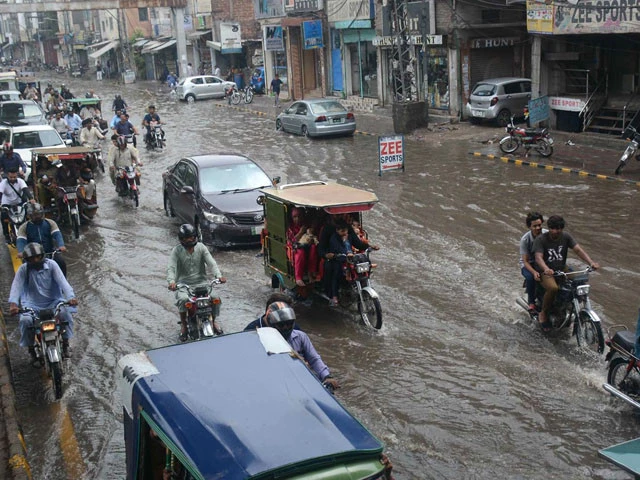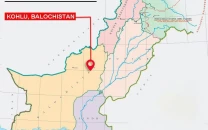Monsoon system strengthens as rain sweeps through major cities
Tourists and farmers advised to avoid vulnerable areas amid shifting weather conditions

The Pakistan Meteorological Department (PMD) has issued fresh warnings as a powerful monsoon system continues to strengthen, bringing the risk of flash floods, landslides, and urban inundation to major cities and vulnerable hilly regions.
The alert, issued on Tuesday morning, spans from the northern districts of Khyber Pakhtunkhwa to southern Punjab and Balochistan. It remains in effect through July 17.
“Heavy to very heavy downpours could trigger flash flooding in nullahs and streams, particularly in Chitral, Dir, Swat, Murree, Kohistan, and Rawalpindi,” said Forecasting Officer Dawood Khan.
Authorities have flagged the risk of landslides in mountainous regions such as Murree, Galliyat, and Gilgit-Baltistan.
The PMD also warned of possible urban flooding in cities including Islamabad, Lahore, Faisalabad, and Multan.
Officials reported on Monday that thunderstorms and strong winds had caused at least nine deaths and 62 injuries in Punjab, while six more fatalities were recorded in Khyber-Pakhtunkhwa.
Strong winds associated with the storm system may damage trees, electric poles, vehicles, solar panels, and standing crops, prompting calls for public caution.
The current spell of heavy rain is being driven by a low-pressure system over northeast Rajasthan, with strong monsoon currents pushing into Pakistan’s central and upper regions.
A westerly wave is also influencing the upper parts of the country.
In the past 24 hours, Okara recorded the highest rainfall at 95 mm, followed closely by Hyderabad with 94 mm.
Other areas experiencing significant downpours included Islamabad, Sahiwal, DG Khan, and Lahore.
Temperatures remained high in parts of Sindh, with Turbat reaching 44°C, and Hyderabad and Nawabshah recording 41°C under humid conditions.
Rain and thunderstorms are forecast across Punjab, K-P, Balochistan, and Sindh through Thursday, with scattered heavy falls expected, particularly in urban areas.
A prior weather alert issued by the Met Office on July 14 had forecast widespread torrential rains with wind-thundershowers from July 15 to 17.
It noted that a low-pressure system over northwest Madhya Pradesh in India was likely to affect Pakistan’s weather patterns over the subsequent 72 hours.
The advisory had outlined expected rainfall across nearly all provinces. In Gilgit-Baltistan, heavy rainfall was forecast in Muzaffarabad, Neelum Valley, Rawalakot, Astore, Skardu, Hunza, and surrounding regions.
In Khyber-Pakhtunkhwa, extremely heavy rain was predicted in Swat, Kohistan, Charsadda, Peshawar, Bannu, and the tribal districts, with risks of flash floods and landslides.
Upper and southern Punjab, including cities such as Lahore, Faisalabad, Multan, and Rawalpindi, were placed on alert. Central and southern Balochistan—Quetta, Lasbela, Khuzdar, Barkhan, and Dera Bugti—were also expected to receive heavy rain from July 14 to 16.
In Sindh, rainfall was forecast for Sukkur, Larkana, Mirpur Khas, and Jacobabad, with light showers predicted in Karachi.
The July 14 advisory highlighted impact risks, including flash flooding in hilly streams, landslides blocking roads, urban flooding in major cities, and damage to weak structures such as the rooftops of kacha houses, billboards, and standing crops in Punjab and Khyber-Pakhtunkhwa.
Tourists, farmers, and travellers were advised to avoid vulnerable areas and stay alert to changing weather conditions.
All civil and provincial authorities were directed to remain on high alert and to implement precautionary measures to minimise damage and protect lives and property.



















COMMENTS
Comments are moderated and generally will be posted if they are on-topic and not abusive.
For more information, please see our Comments FAQ